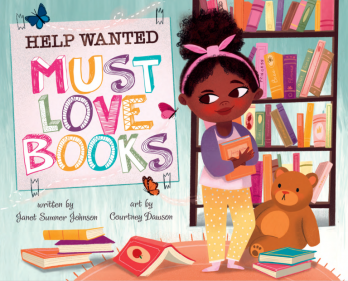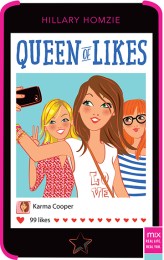One of my favorite things about writing for FROM THE MIXED-UP FILES is that I get to talk to so many authors. This post is especially fun for me because I got to interview my good friend Janet Sumner Johnson who does what to me seems impossible – successfully moving between writing Middle Grade and Picture Books.
 You started your career as an author writing Middle Grade (THE LAST GREAT ADVENTURES OF THE PB&J SOCIETY). What got you interested in writing Picture Books? And, how long did it take you to write a manuscript you were happy with?
You started your career as an author writing Middle Grade (THE LAST GREAT ADVENTURES OF THE PB&J SOCIETY). What got you interested in writing Picture Books? And, how long did it take you to write a manuscript you were happy with?
I have always loved picture books. The idea of telling a story in so few words fascinated me! When I had three young kids at home, we had just moved to a new city, and we spent a lot of time at the library and reading picture books. Kids can be pretty inspiring (lol!), and that’s when I first attempted to write a picture book.
Granted, I was busy writing middle grade during this time, but it took eight years from the moment I wrote that first picture book, to when I finally dared show a manuscript to my agent.
Where do you get your ideas? And, once you have an idea, how do you know if it is best suited for a Picture Book or a Middle Grade book? Do you start out with the form specifically in mind or does it sometimes take you by surprise?
Most of my ideas come from life. PB&J Society was inspired by the 2009 recession, when so many people were losing their houses. I also dipped liberally into my own memories as a child. Help Wanted came from my daughter. She wanted Daddy to read her a bedtime story, but he was frantically working on a presentation for work the next day. She basically fired him then and there.
When I get an idea, it’s usually pretty clearly one or the other. Sometimes character age will dictate that. Sometimes it’s the simplicity/difficulty of the problem to be solved. And I’m a pretty visual thinker. With a picture book, I can usually see images in my head for how the story might unfold. With a middle grade, it’s more like a movie.
But every now and then, I’ll start a picture book and brainstorm my way into what could be a fun middle grade book. For example, I’m working on a picture book pirate story, and some of the ideas I jotted down for the resolution were pretty extensive. Way too much for a picture book. So I’ve tucked those ideas into my middle grade files.
What’s your favorite thing about working on Picture Books? What’s the most difficult? And how do those things compare to what you love about Middle Grade and what challenges you the most there?
 With picture books, I love the wordsmithing that’s involved. Every word matters. I get to mine my brain (and hone my Google searches) for word play and luscious words that can say MORE with less. The most difficult part is deciding what NOT to say. Pictures are so important, and leaving space for the illustrator can be a balancing act sometimes. What parts of the story need to be read, and what parts would be better left for the illustrator? I actually really enjoy figuring that out, but it’s definitely challenging.
With picture books, I love the wordsmithing that’s involved. Every word matters. I get to mine my brain (and hone my Google searches) for word play and luscious words that can say MORE with less. The most difficult part is deciding what NOT to say. Pictures are so important, and leaving space for the illustrator can be a balancing act sometimes. What parts of the story need to be read, and what parts would be better left for the illustrator? I actually really enjoy figuring that out, but it’s definitely challenging.
After writing a picture book, middle grade feels so liberating. I get to use ALL THE WORDS (even if it will need revision). The whole story is mine, and I can tell as much or as little as I choose. But as freeing as that is, and as much as I love that freedom, that leads to my biggest challenge in middle grade: plotting out the story.
Plotting is tough! Not only do you have to figure out the main story, but then you have to create subplots that align and enhance the main plot. There’s so much space, and figuring out all the intricacies of the whens and the whys . . . it can be brain melting. It’s quite the contrast to picture book plotting which is so focused.
What skills have you gained from writing Picture Books that help in writing Middle Grade? How has writing Picture Books changed your Middle Grade writing?
So haha,  the biggest skill I’ve gained from writing picture books is plotting. As I mentioned above, I can get really bogged down with plotting in middle grade. Writing picture books has helped me learn to break it down, to really focus on the basics. Intricacies can be added in later, but if I focus on the plot in its simplest form first, that really helps me. In addition, because picture book plotting gives such an emphasis to story structure, that can help me see the possibilities of where I can go with the story when plotting a middle grade.
the biggest skill I’ve gained from writing picture books is plotting. As I mentioned above, I can get really bogged down with plotting in middle grade. Writing picture books has helped me learn to break it down, to really focus on the basics. Intricacies can be added in later, but if I focus on the plot in its simplest form first, that really helps me. In addition, because picture book plotting gives such an emphasis to story structure, that can help me see the possibilities of where I can go with the story when plotting a middle grade.
In addition to changing the way I think about plot, picture book writing has affected my writing on both a micro and macro level. Micro in that I tend to write a little leaner than I did before and spend more time on word choice (though I try to hold back the picture book writer in me until revisions). Macro in that I spend more time thinking about the heart of the story. Heart is so important in picture books. Without it, story can fall flat. That’s true for middle grade, too. And while I knew that, picture book writing made me think about it in a different way.
What was your biggest challenge in switching from Middle Grade to writing Picture Books? And, what advice do you have for writers looking to branch out into other forms?
My biggest challenge in making the switch was overcoming my own self-doubts. I would look at picture books I loved and think, “Wow, this book is amazing! I could never write something like that.” I wasted a lot of time with such destructive thinking.
Switching genres was definitely a challenge. It took me years of practice and study to figure it out (and I’m still figuring it out). But anything is possible. If you want to branch out, do it! Push away those doubts and go for it! Look for mentors who can help you through. I took a class from Susanna Leonard Hill called Making Picture Book Magic, and it was transformative. She has been an amazing mentor for me and for so many others. So go for it! I believe in you.
Both THE LAST GREAT ADVENTURES OF THE PB&J SOCIETY and HELP WANTED: MUST LOVE BOOKS take a serious subject and infuse it with humor. Do you have any advice on how to write funny?
I love humor so much. It’s been my coping mechanism for as long as I can remember. The best advice I can give is to blend in the unexpected with the everyday and mundane. Do that well, and you’ve got humor gold. Three ways to throw in the unexpected is through your character, through the setting, and through the events.
For character examples, just look at Pigeon in DON’T LET THE PIGEON DRIVE THE BUS! by Mo Willems. He takes an everyday event like driving the bus, and makes it hilarious by swapping out the bus driver. Or take the character Bunnicula in Deborah and James Howes’ BUNNICULA. Mixing a bunny and a vampire is just so unexpected! The cute and cuddly mixed with a horror monster. Neither is funny on its own, but put them together, and brilliant!
For setting, just look at ESCAPE FROM MR. LEMONCELLO’S LIBRARY by Chris Grabenstein. While authors and book people know that libraries are amazing, Chris Grabenstein made this one amazing to everyone! So many unexpected hidden clues, and even unexpected rooms in a library. He took something we all love and turned it on its head.
And for examples of humorous unexpected events, we have the typewriter and the cows’ demands in CLICK CLACK, MOO! COWS THAT TYPE by Doreen Cronin. So unexpected and hilarious!! It’s the combination of two mundane things that don’t usually go together that really make the book amazing. And bonus, if you want to take a master class in unexpected events, study THE BEST WORST CHRISTMAS PAGEANT EVER (or any of the other books in that series) by Barbara Robinson. She is brilliant.
There’s so many great humorous books. Read them, and when you find yourself smiling or laughing, stop, and try to break down what the author did. I’m all about mentor texts.
I know a lot of your in-person events were cancelled due to COVID-19? Where can our readers find you on-line?
You can find me on Instagram, Twitter, and Facebook. And you can always connect with me through my website, www.janetsumnerjohnson.com, which also has fun extras for both my books from coloring pages to teaching guides.
In addition, I’ve got some virtual events coming up:
On June 6th at 11 AM EST, I’ll be doing an online reading of HELP WANTED in conjunction with House of Books, a bookstore in Connecticut. I’ll be on their Instagram account: https://www.instagram.com/hobookskent/.
I’ll also be participating in Nerd Camp SoCal on July 17th along with many other amazing authors. You do have to register for that, but it should be amazing!
Thanks so much for having me on From the Mixed-Up Files!
Janet’s picture book, HELP WANTED: MUST LOVE BOOKS is out now! You can find it and THE LAST GREAT ADVENTURES OF THE PB AND J SOCIETY at your favorite indie bookstore.


 I’m excited to interview one of our very own Mixed-Up Files authors who recently had two book releases in her middle-grade series about the irrepressible Ellie May—Hillary Homzie. So let’s get started…
I’m excited to interview one of our very own Mixed-Up Files authors who recently had two book releases in her middle-grade series about the irrepressible Ellie May—Hillary Homzie. So let’s get started…
 Right away, she begins practicing her practical jokes—with ants and all. The question becomes—will she take her mission too far?
Right away, she begins practicing her practical jokes—with ants and all. The question becomes—will she take her mission too far? I’ve written a half dozen books for tween girls. Queen of Likes (Simon & Schuster/Aladdin) was recently selected by the Association of Jewish Libraries for the
I’ve written a half dozen books for tween girls. Queen of Likes (Simon & Schuster/Aladdin) was recently selected by the Association of Jewish Libraries for the  —which was a true thrill!
—which was a true thrill!